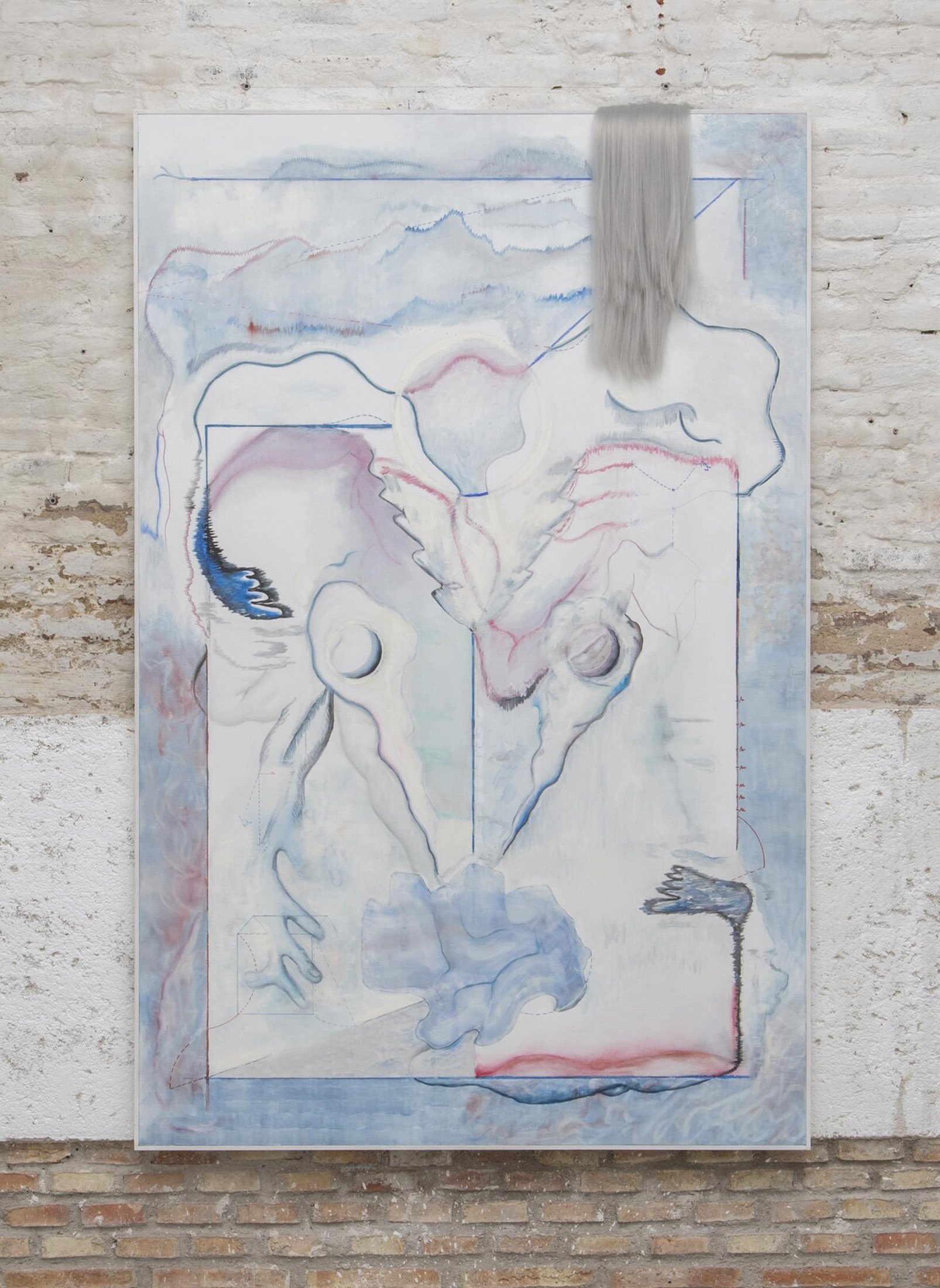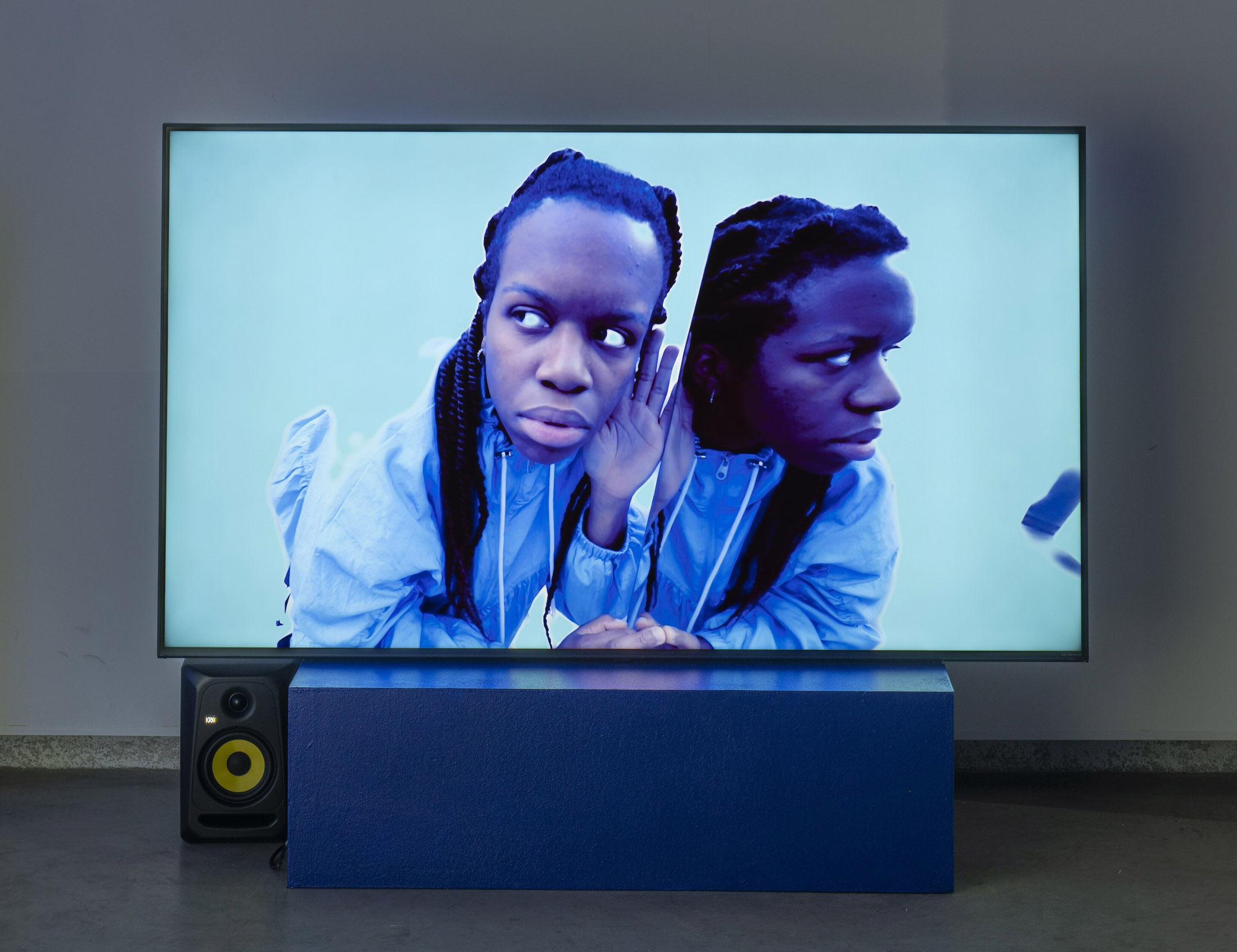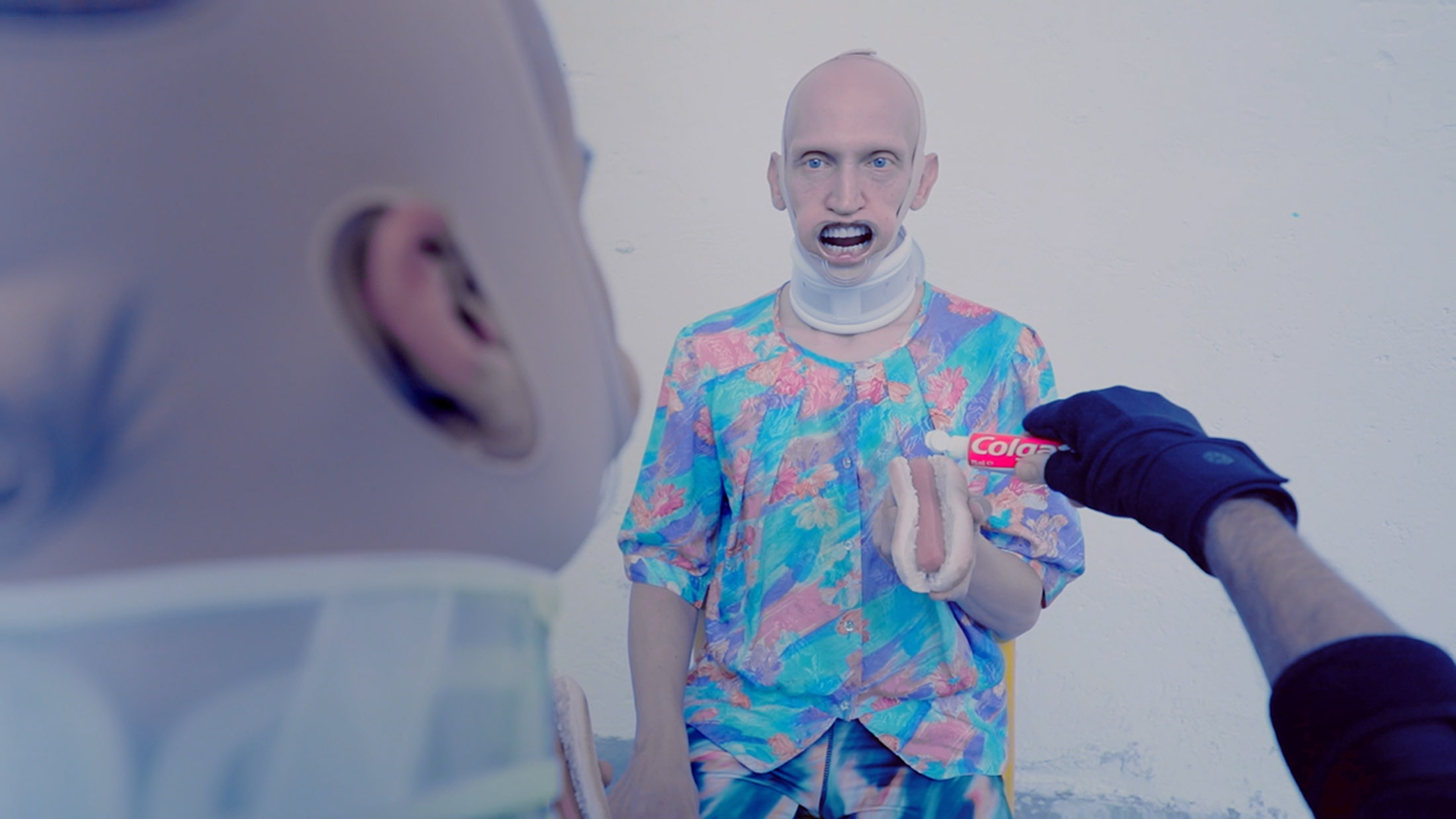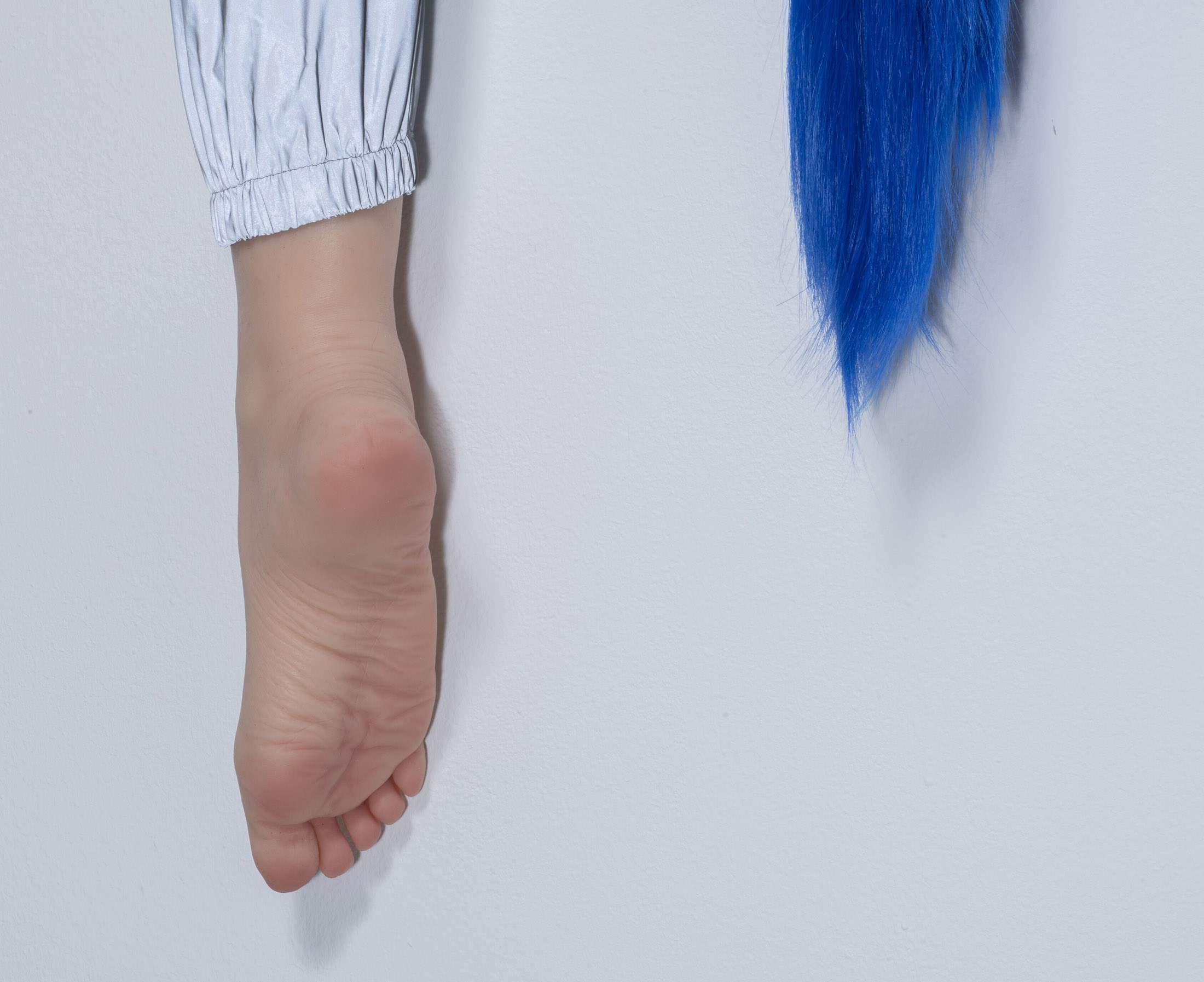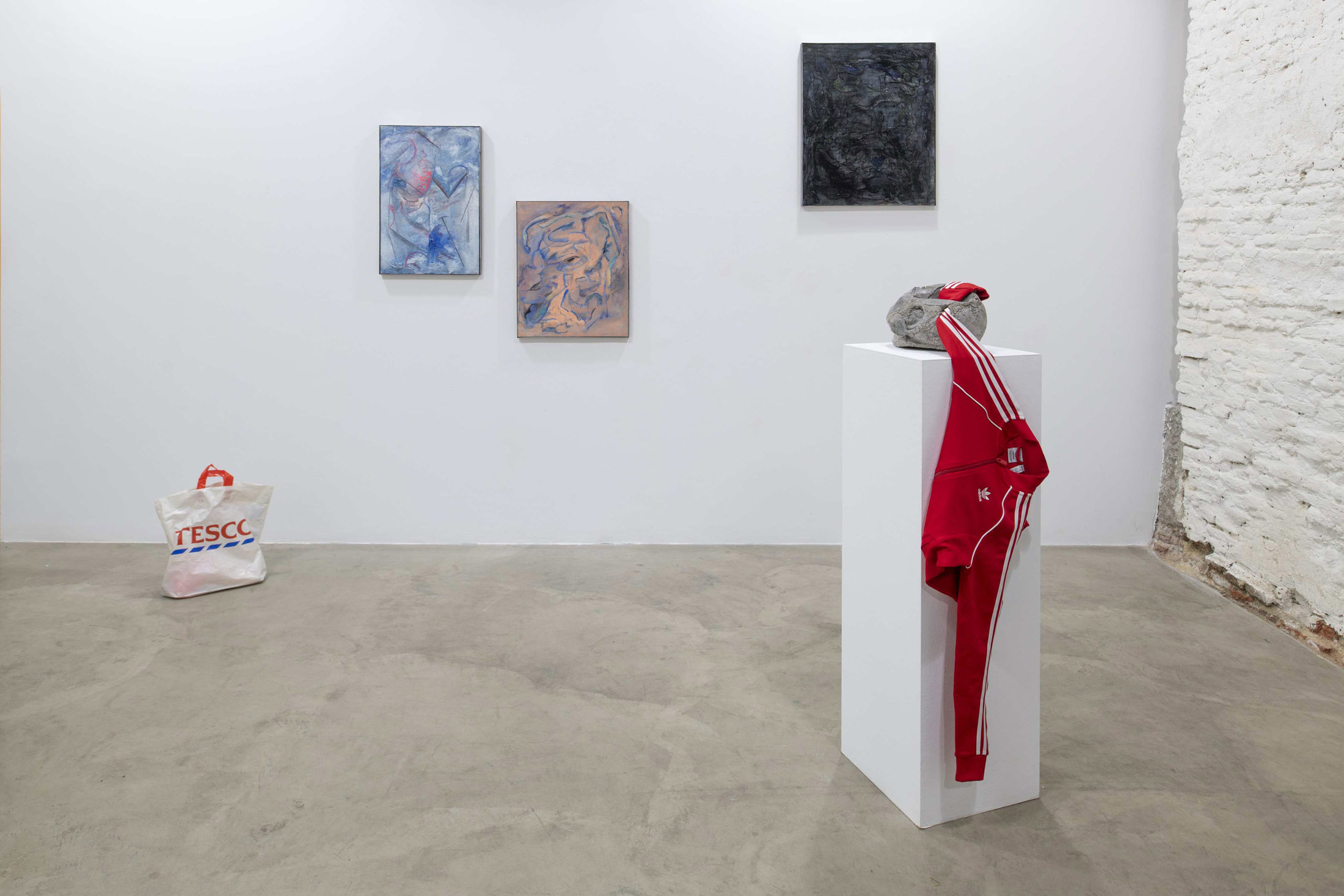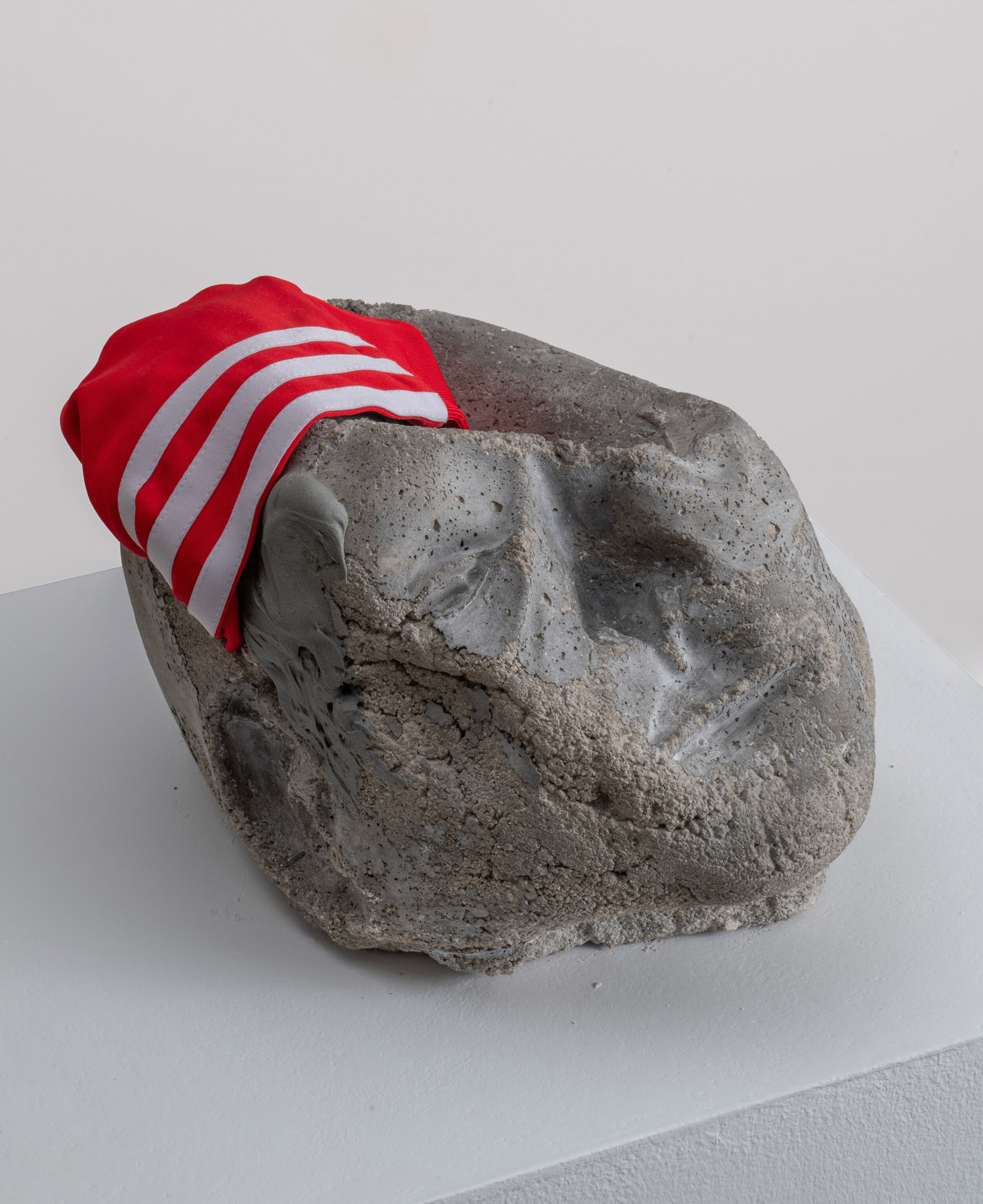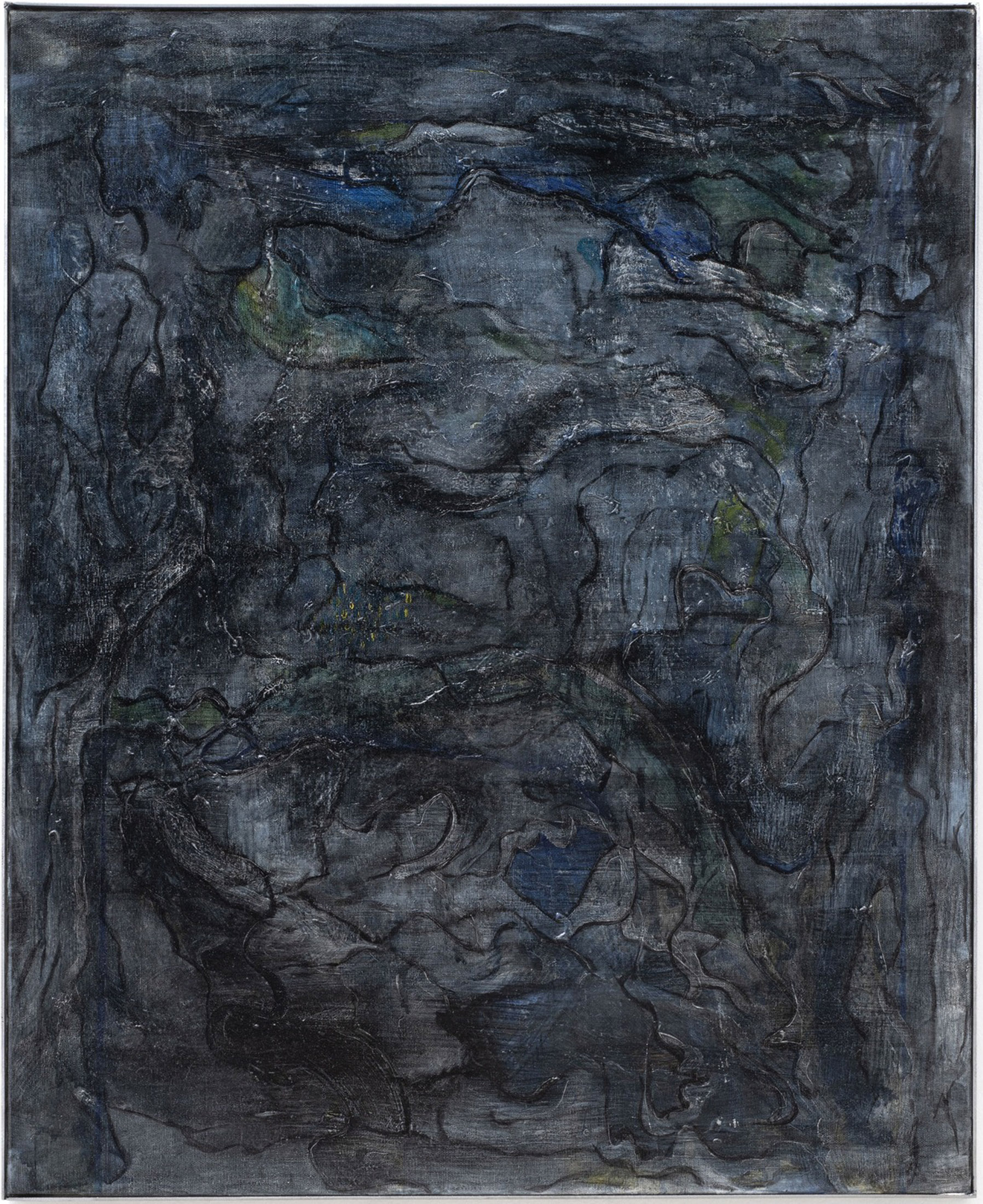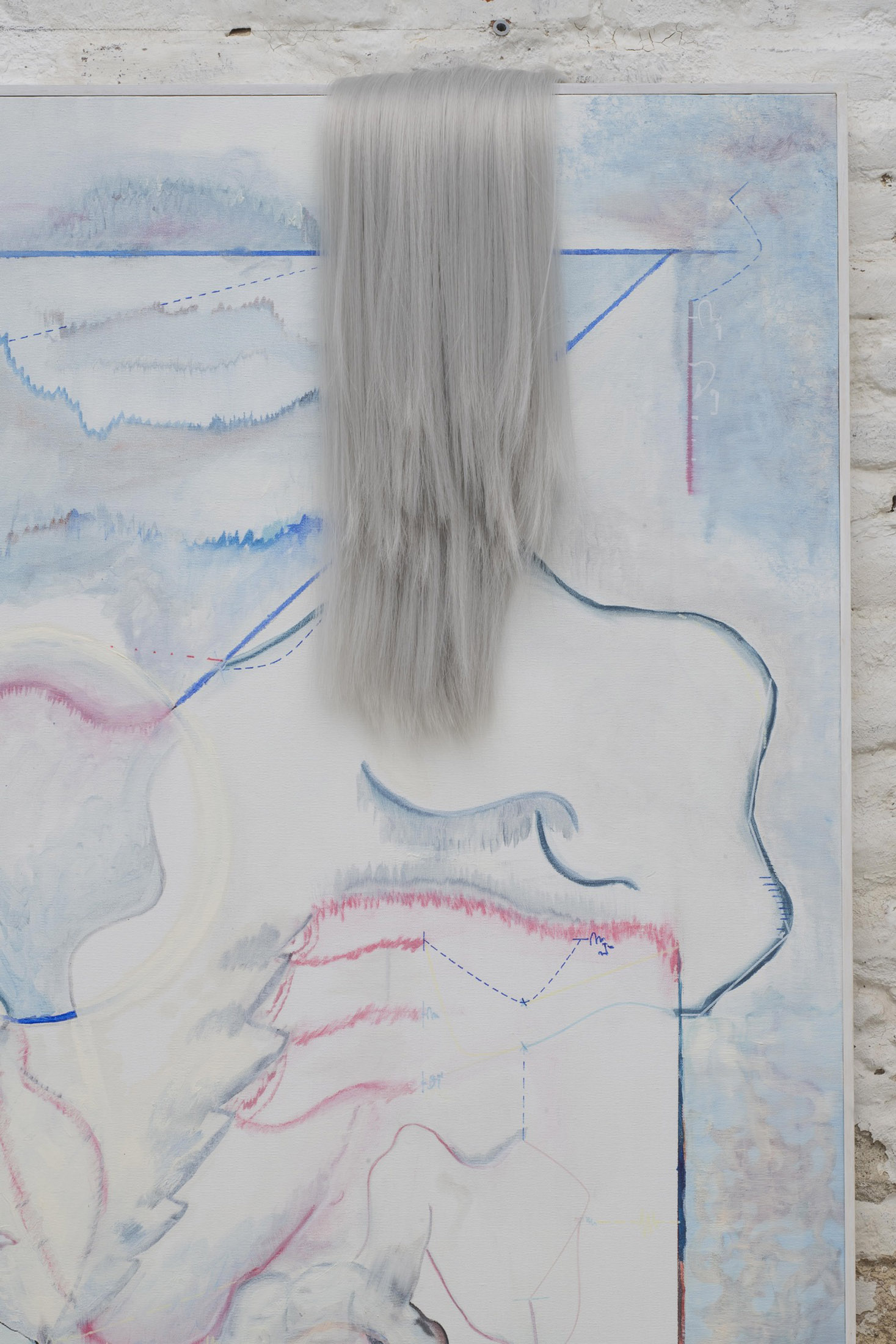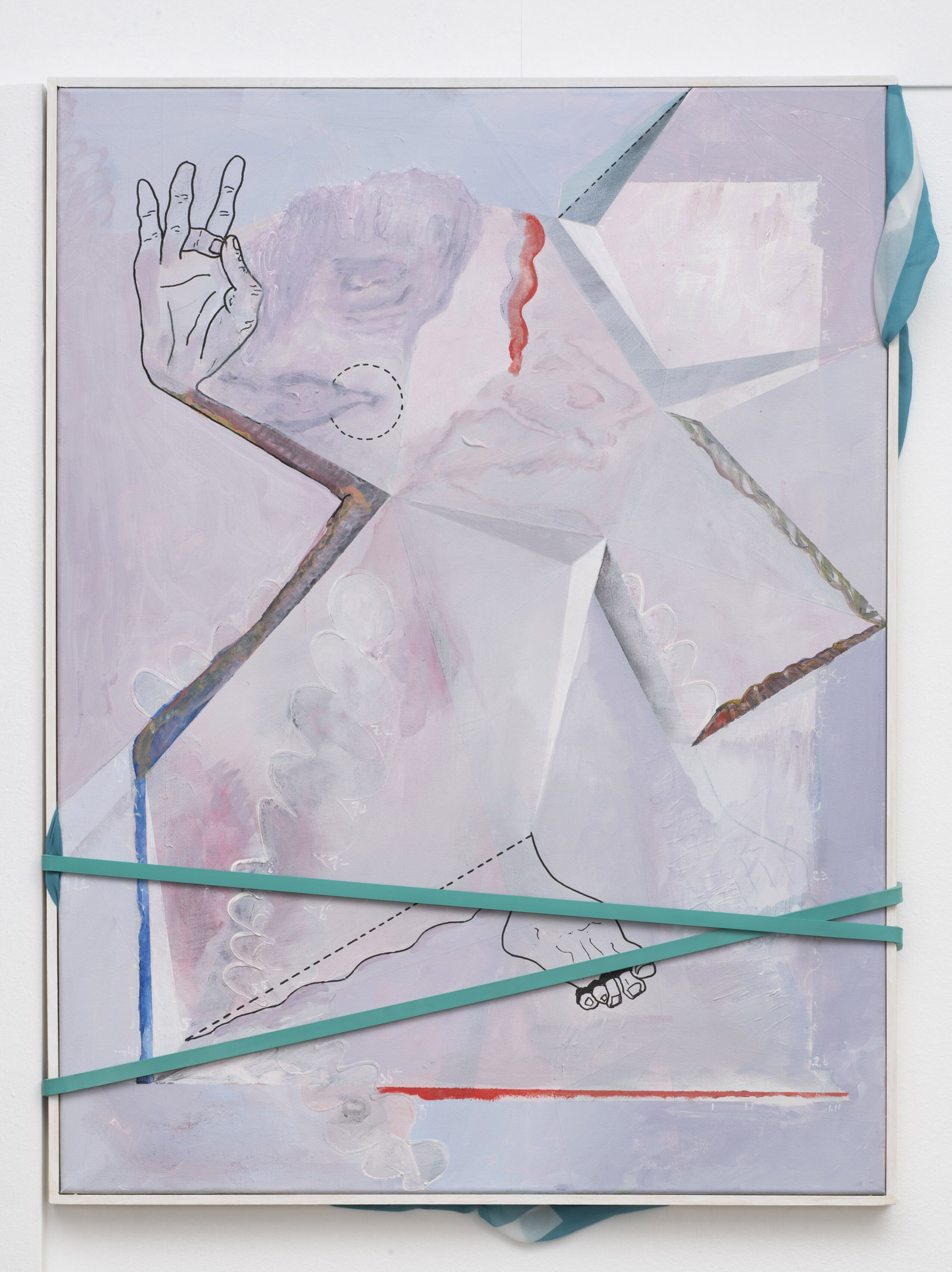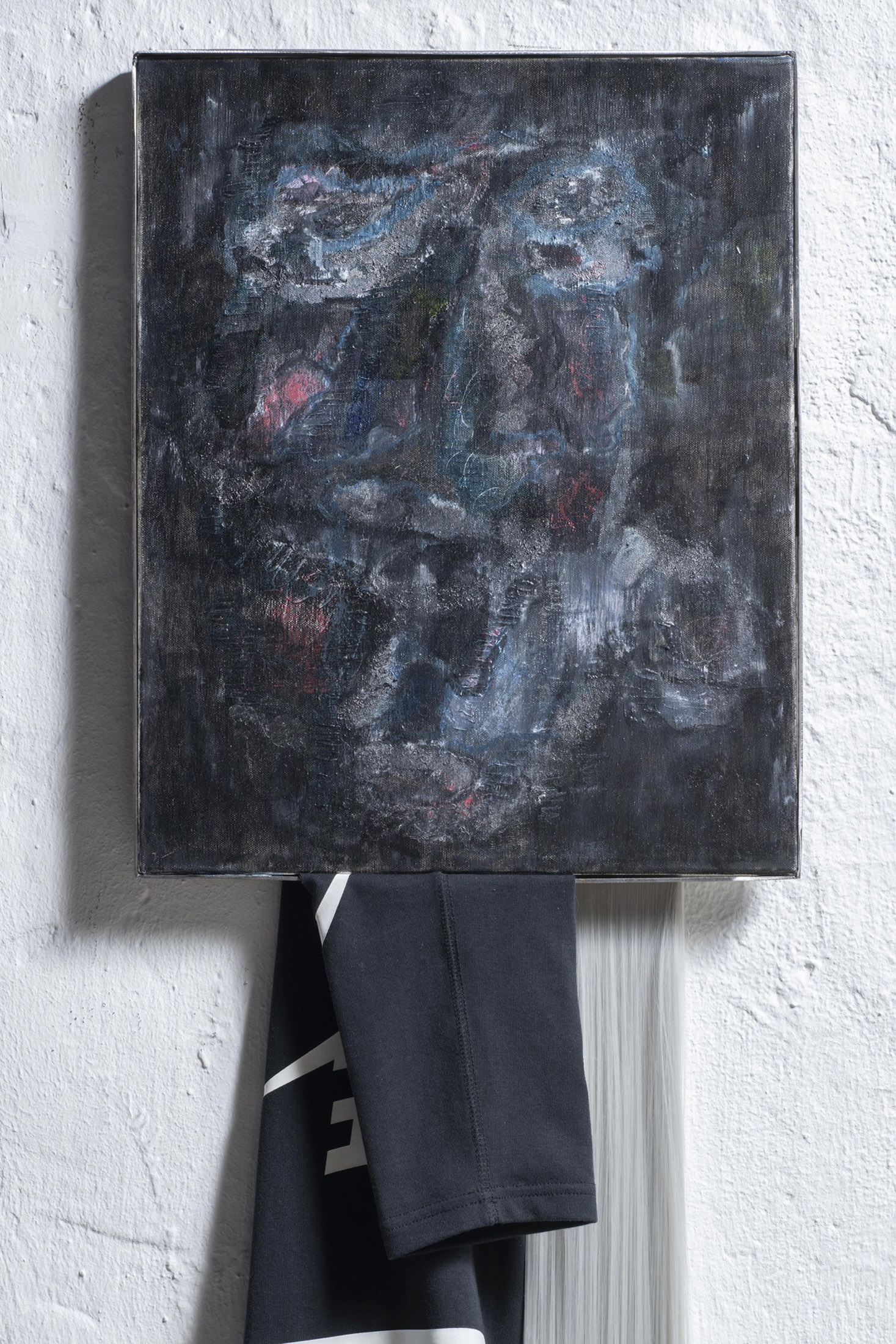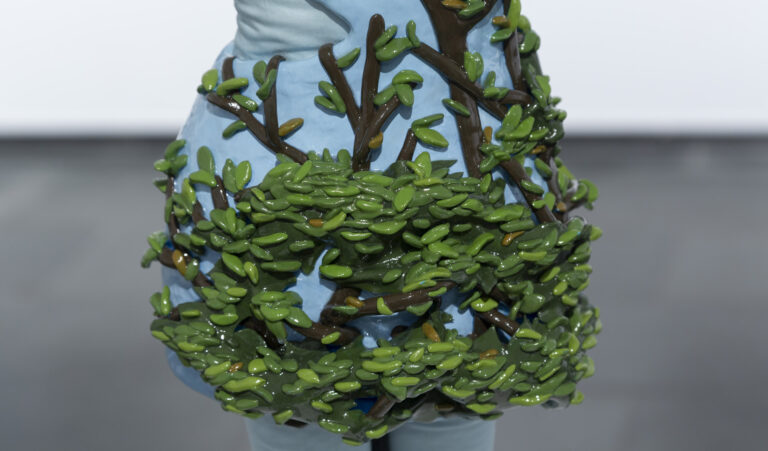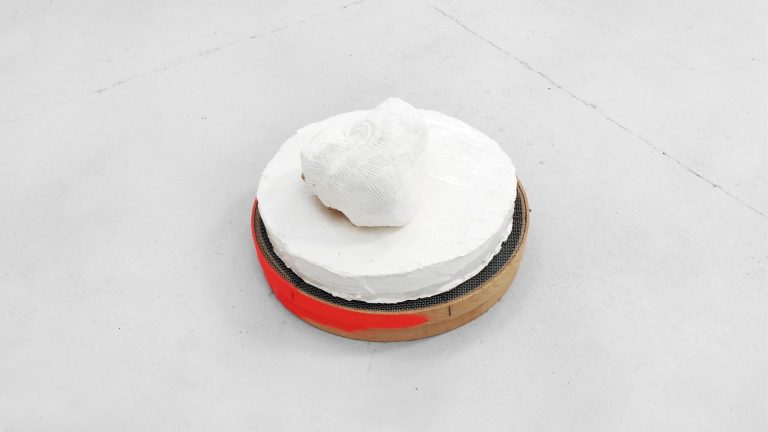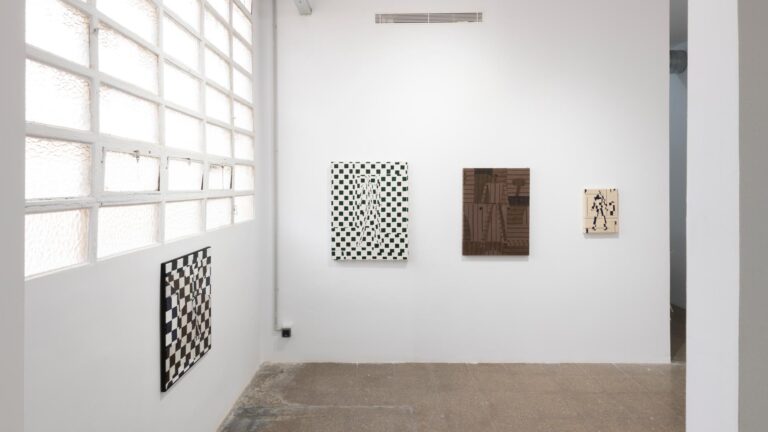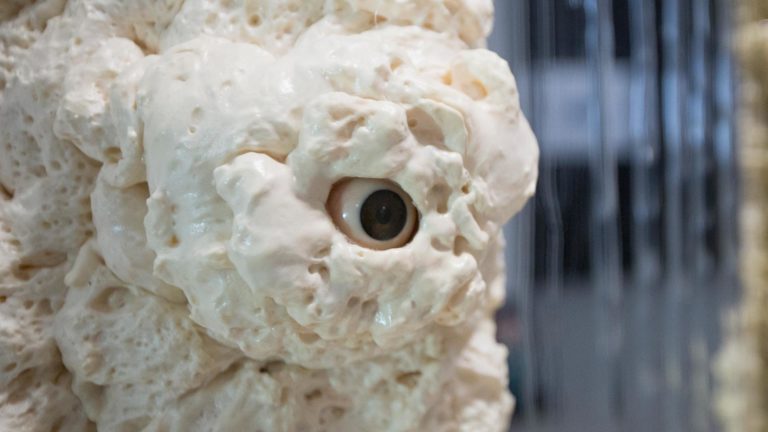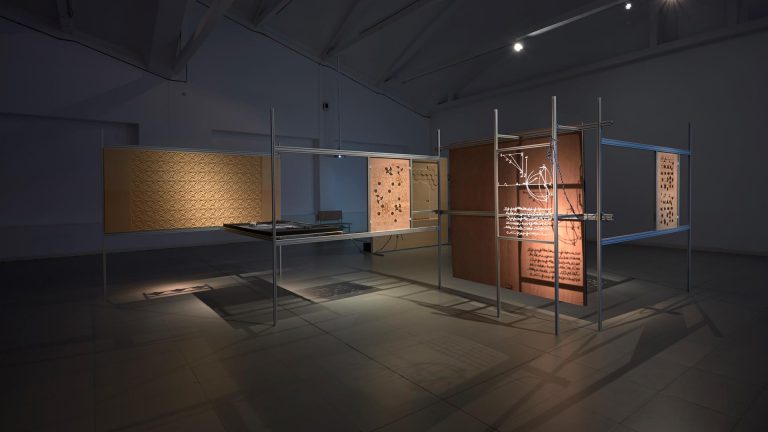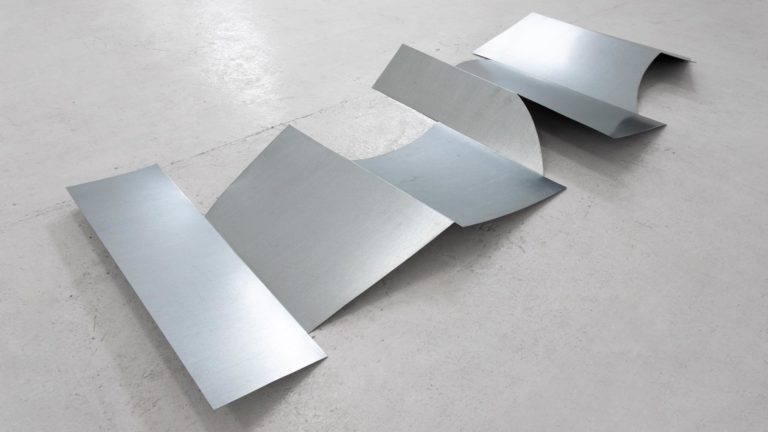Artist: Nora Barón
Exhibition title: YUYO, A Tipsy Drama in Three Parts
Venue: The Ryder, Madrid, Spain
Date: November 16, 2023 – January 20, 2024
Photography: All images copyright and courtesy of the artist and The Ryder, Madrid
YUYO, A TIPSY DRAMA IN THREE PARTS is the first solo exhibition by Nora Barón. Its format is unusual, therefore the approaches to the show are unusual too. There are three suggested navigation routes, each one based on a description of the word YUYO.
Click the one that creates a feeling in the pit of your stomach. Thank you:
1) Yuyo is a weed, one that should not be there, there are weeds everywhere.
You are entering a living organism. It changes, it evolves, it has its own time and space, it nourishes, it rots and dies, sometimes it is reborn, but sometimes it simply ends. All this activity generates stories, all together they could form one story, or several ones. The story I have chosen to tell you will accompany you through the exhibition, but in no way will it tell you anything about the exhibition. It starts with an adidas red jacket. Take some time to look for it. I guess you have already found it. This jacket is an imitation, it looks authentic, it even has a label that might make you think it is a jacket just like the one you have, or your friend or your cousin; nothing could be further from the truth, this garment is a fake so forget everything you think you know about it. One day this fake garment started to develop a corn on its sleeve, little by little a kind of greyish substance started to surround the space where there used to be an arm and over time this imitation jacket just happened to become something else. Maybe this happened because of someone who wore this garment. I can’t tell you if this jacket arrived here like this or if this “corn” appeared after many uses, being the result of wearing it. Something similar happened with the black trousers, look for them… I’m not very clear about their story, but I can tell you what I was told. Apparently, these Nike trousers had problems deciding for which type of use they were meant to. According to what Nora told me, these trousers were in her studio, they were very comfortable lying there until one day they began to feel jealous of the other objects in the studio. It is not easy to live in an artist’s studio – this is something that Nora always remarked to me when talking about these trousers – in the studio objects undergo transformations, they relate to bodies, sometimes they even become works of art. This trouser, tired of waiting, decided it deserved to be worthy of Nora’s attention and after many discussions with Nora they came to an agreement. What you see here is the result of their conversations.
If you approach the video installation, maybe you can feel what these trousers felt or maybe what you experience is something completely different that I don’t really need to know about. That’s up to you.
All the stories surrounding this organism are far from epic, they happen by chance, and many will probably remain untold or appear as you browse through the exhibition. Things just happen here, like almost everything else in life, like the weed in your garden or in your small pot, the one that nobody invited and that one day just appeared to remind you that you are not in control.
2) Yuyo is a Quechua word that is pronounced the same way in all languages, in English Yuyo is Yuyo, in Spanish Yuyo is synonymous with weeds.
Yuyo is an organism to be inhabited, one that dialogues with You.
It contains a series of mechanisms with very particular semantics, there are no meanings, but there are actions and objects that produce them. Use these meanings as you wish.
There is no specific route, but I recommend that you follow the map on the back of this sheet. On the map you will find symbols ( # * @ ). These symbols function as a glossary that identifies elements. From them you will know what these elements are, but not what they mean. That is up to you to decide.
#
Tipsy Bubu is a set of intensities, there is no story but a series of characters pretending to be something else. These characters emit light and move like animals trying to hit you. We recommend you to let yourself be hit, to inhabit your own animal, although we cannot be held responsible for the consequences of the crash nor for your own howls.
*
The flow vectors are diagrams of movement, maps, abstractions of the various performative displacements that occur in the exhibition: from the figure to the background, from rest to gesture, from meaning to meaninglessness. Halfway between the register, the script and the image, YY/VF/01 and YY/VF/02 embody a certain tragicomic and inebriated darkness. Smile.
@
The nodes are emotional landscapes, subjectivised intersections, embodiments of what is happening in the rest of the organism and have an aesthetic dimension of their own. They are everywhere in the exhibition. They all fulfil a function within this organism, they are the most quotidian elements of all those who inhabit this place. They have a present, a past and a future. Spend time with them.
There is no right or wrong way to follow this route, the symbols are orientative and perhaps Nora Barón is only trying to confuse you. Yuyo is pronounced yuyo in all languages, but like weeds, it is elusive and is always looking for an opportunity to contaminate what surrounds it and turn it into something else.
3) Yuyo is edible, it also has medicinal use, it has a bitter flavour, similar to rose water.
Yuyo is what you experience when someone stares at you. Like seeing animals without there being animals. Like seeing an image through water. That’s why Nora Barón proposes a series of exercises through which we may approach YUYO together.
- Look around you calmly, and pay attention to your surroundings, turn the wrist that is not holding the paper three times; one, two, three.
- Go to the nearest work from you, or the one that catches your attention, and spend more than 20 seconds looking at it, but don’t cross over to the darkest part yet.
- Head towards the curtain, note that once you are there you will not be able to read any further so pay attention to the following instructions before entering.
a) Find a soft blue element, sit on it.
b) Stare at the screen, as long as you want, let it tell you what it wants.
c) Look behind the screen.
d) Look at all the illuminated elements.
e) Get out of the dark room.
- Let your eyes get used to the light, there is no rush, you can sit on the stairs at the entrance if you need to.
- Spend some time smelling the space, try to find a familiar smell in your memory, everything has a smell, don’t forget this.
- Say Yuyo out loud twice, if you come with someone invite them to say Yuyo out loud with you twice, also whisper it in their ear. It doesn’t matter if they are taking a different route to see the exhibition, it is nice to coordinate your voice with someone else’s voice.
- Take one last look at the exhibition and choose something you want to remember when you think of Yuyo, concentrate on that image and fix it in your head, it belongs to you now. 8. Finally, fold this sheet of paper into four pieces, put it in the pocket you use the least and forget about it. Take it with you, let it stay in that pocket until some time from now, when you are looking for something you have lost, you will meet again.
NORA BARÓN (Encoded in Spain, UK and The Netherlands. Currently actualised in Madrid, Spain.)
Do you remember this scene in Terminator in which a farmer´s body is taken by a Terminator T-800? The human body doesn´t really fit the Terminator and a weird disarrangement can be noticed. The next generation of T-1000 Terminators are fluid and do not have that problem. My art practice rehearsals the opposite journey. In other words: Do you know when something happens or somebody says something and you feel so embarrassed that you start turning red…? Time collapses and you slowly become a kind of object whose subject has spread out. Time, which is normally fluid, petrifies, and your subjectivity is no longer yours. Themes and questions in our work change and transform, like our face when we turn red.
When Hans Ulrich Obrist visited the exhibition Querer Parecer Noche at CA2M Madrid, he read a caption that declared our performance to perhaps be happening at that very moment. HUO loudly said: “We are all Nora Barón”, thus becoming the performer, the author and the audience all at once. We are all Hans Ulrich Obrist.

